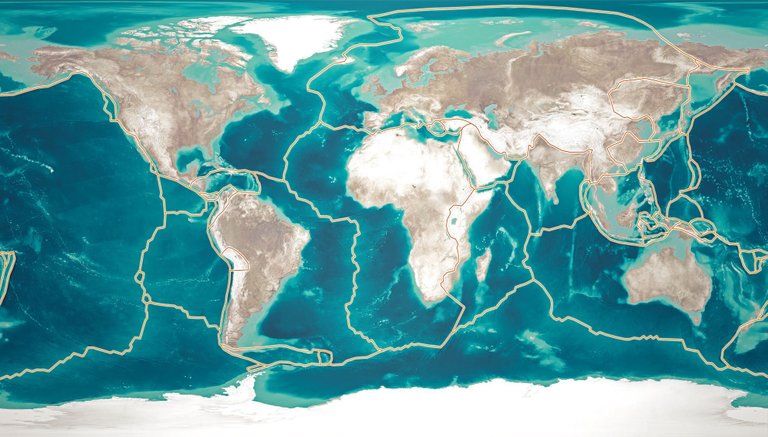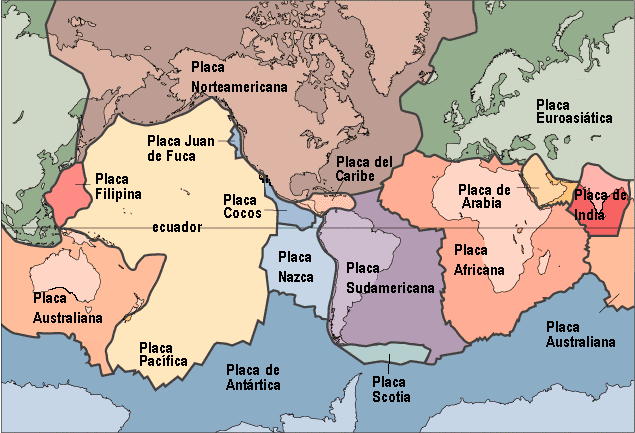
Source
In 1885 Eduard Suess studying the dispersal of fossil plants and seeing their coincidences came to the conclusion that, since it is impossible for plants to have crossed the ocean, somehow the continents should have been united in the past and proposed the existence of a super continent called Gondwana.
En 1885 Eduard Suess estudiando la dispersión de las plantas fósiles y viendo sus coincidencias llegó a la conclusión de que, debido a que resulta imposible que las plantas hubiesen atravesado el océano, de alguna forma los continentes tendrían que haber estado unidos en el pasado y propuso la existencia de un super continente llamado Gondwana.
This super-continent would be formed by what today would be Africa, Madagascar, South America, Australia and India, later Alfred Wegener postulated the theory of continental drift and as in the past all the continents were together forming a large land mass to the which he called Pangea.
Este super-continente estaría formado por lo que hoy sería África, Madagascar, Sudamérica, Australia y la India, posteriormente Alfred Wegener postuló la teoría de la deriva continental y como en el pasado todos los continentes estaban juntos formando una gran masa de tierra a la que llamó Pangea.

Source
This super-continent began to crack and separate until forming the continents that we know today due to what geologists call plate tectonics, this means that the earth's crust is fragmented into plates that float in a kind of molasses formed by fused rock.
Este super-continente comenzó a resquebrajarse y separarse hasta formar los continentes que conocemos hoy en día debido a lo que los geólogos llaman tectónica de placas, esto quiere decir que la corteza terrestre está fragmentada en placas que flotan en una especie de melaza formada por roca fundida.
These plates are still in continuous motion today, colliding with each other and mounting on top of each other resulting in the earthquakes we feel on the surface and in theory, within a few hundred million years, the continents will come together again. to form a new Pangea.
Estas placas aún hoy en día están en continuo movimiento, chocando unas con otras y montando unas sobre otras lo que da como resultado los terremotos que sentimos en la superficie y en teoría, dentro de unos cientos de millones de años, los continentes volverán a juntarse para formar una nueva Pangea.

Source
Apparently geologists have been debating for a long time when the crust broke into plates and how and when they began to separate, but they have not quite agreed if a billion or 4 billion years ago, these estimates would have had consequences very different in the current distribution of plates.
Por lo visto los geólogos llevan mucho tiempo debatiendo en que momento la corteza se rompió en placas y como y cuando se empezaron a separar, pero no acaban de ponerse de acuerdo si hace mil o 4 mil millones de años, estas estimaciones habrían tenido consecuencias muy diferentes en la distribución actual de las placas.
The news is that a group of geologists studying the isotopes of tungsten found in the rocks of the Australian Outback, have come to the conclusion that the earth's crust has begun to crack about 3.2 billion years ago. The really fascinating thing is to think that such masses of earth can be in continuous movement.
La noticia es que un grupo de geólogos estudiando los isótopos de wolframio que se encuentran en las rocas del Outback australiano, han llegado a la conclusión de que la corteza terrestre ha empezado a resquebrajarse hace unos 3.200 millones de años. Lo realmente fascinante es pensar que semejantes moles de tierra puedan estar en continuo movimiento.
More information/Más información
https://www.pnas.org/content/118/2/e2012626118.short